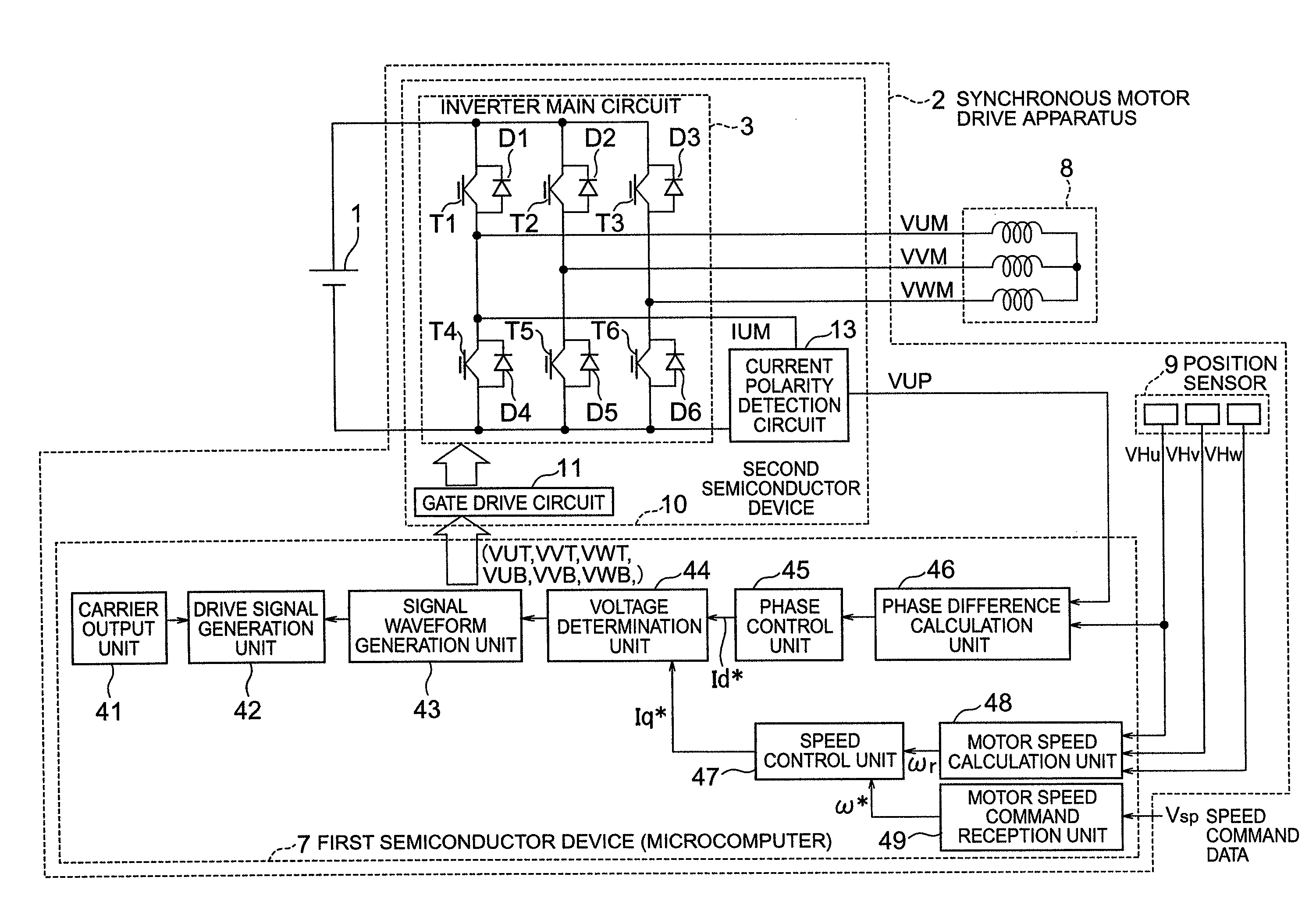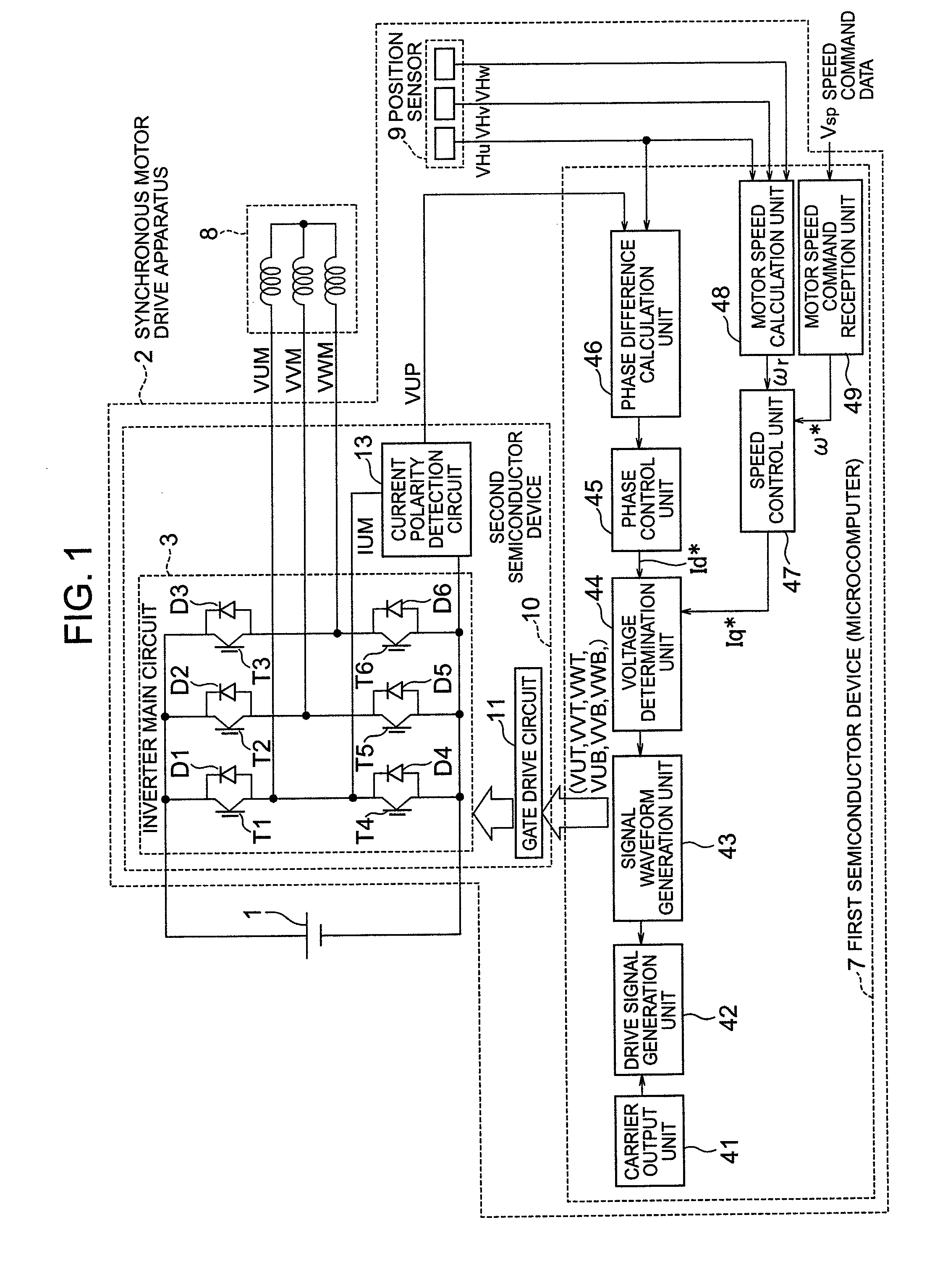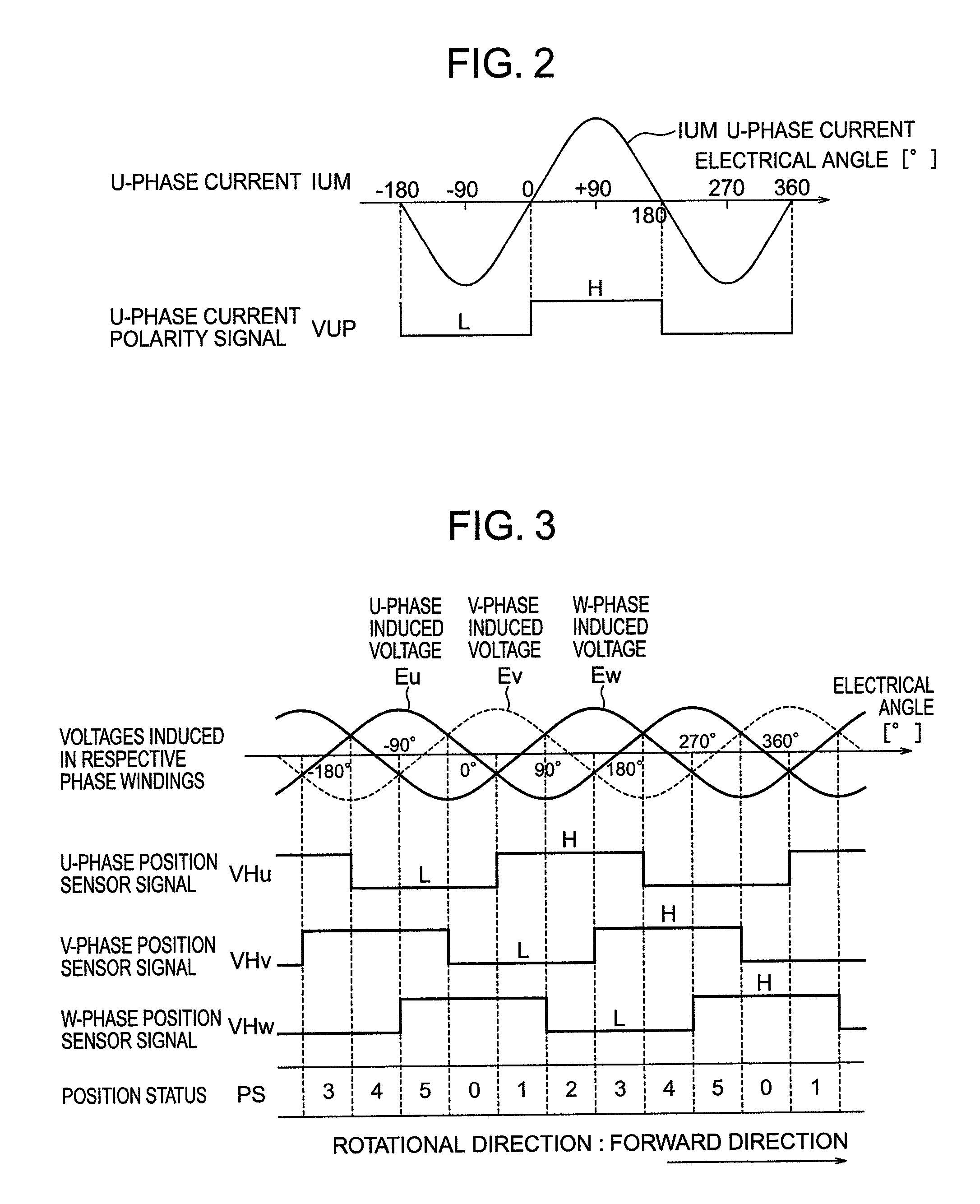Apparatus and method for driving synchronous motor
a synchronous motor and apparatus technology, applied in the direction of motor/generator/converter stopper, electronic commutator, dynamo-electric converter control, etc., can solve the problems of mechanical noise generation, reduced efficiency, and inability to enjoy simple structure and low cost, and achieve low cost, high efficiency, and universal applicability
- Summary
- Abstract
- Description
- Claims
- Application Information
AI Technical Summary
Benefits of technology
Problems solved by technology
Method used
Image
Examples
embodiment 1
[0054]FIG. 1 shows in general block diagram an apparatus for driving a synchronous motor as a first embodiment of this invention. This synchronous motor drive apparatus 2 can be suitably applied as a drive apparatus for a fan motor used in, for example, the outdoor unit of an air conditioner.
(Description of Drive Apparatus as a Whole)
[0055]The main circuit in FIG. 1 will first be described. A DC power source 1 supplies DC power to a synchronous motor drive apparatus 2. The voltage of the DC power is a high voltage of about 141˜450 volts and fed from a battery or a converter available in the market which is used to commutate and smooth the commercial AC power.
[0056]An inverter main circuit 3 consists of six switching elements T1˜T6. The switching elements T1 and T4 are connected in series with each other, the switching elements T2 and T5 are connected in series with each other, and the switching elements T3 and T6 are connected in series with each other. The three series circuits of ...
embodiment 2
[0166]FIG. 23 shows in general block diagram an apparatus for driving a synchronous motor as a second embodiment of this invention. In FIG. 23, the same components as shown in FIG. 1 are indicated by the same reference numerals. Only different components are described below.
[0167]The synchronous motor drive apparatus shown in FIG. 23 differs from that shown in FIG. 1 in the additional provision of a phase difference target value calculation unit 50.
[0168]FIG. 24 is a flow chart for the interruption procedure for position detection performed in the second embodiment of this invention. FIG. 24 is the same as FIG. 12 except the addition of Step 241 of calculating phase difference target value.
[0169]FIG. 25 is an example of the graphic representation illustrating the relationship between the phase difference target value and the value of the detected speed, observed in the case where the phase difference target value is varied in accordance with the value of the detected speed.
[0170]In ...
embodiment 3
[0174]FIG. 26 shows in general block diagram an apparatus for driving a synchronous motor as a third embodiment of this invention. In FIG. 26, the same components as those shown in FIG. 1 are indicated by the same reference numerals. Only different components are described below.
[0175]The synchronous motor drive apparatus shown in FIG. 26 differs from that shown in FIG. 1 in the additional provision of a phase difference target value input unit 51.
[0176]The phase difference target value input unit 51 receives and holds the phase difference target value θih* preset outside the microcomputer. The phase difference target value input unit 51, after having held the received phase difference target value, operates in the same manner as described with the first embodiment detailed above, and therefore the operation of the unit 51 is omitted here. Further, the phase difference target value calculation unit 50 for the embodiment 2 may be used with the phase difference target value input unit...
PUM
 Login to View More
Login to View More Abstract
Description
Claims
Application Information
 Login to View More
Login to View More - R&D
- Intellectual Property
- Life Sciences
- Materials
- Tech Scout
- Unparalleled Data Quality
- Higher Quality Content
- 60% Fewer Hallucinations
Browse by: Latest US Patents, China's latest patents, Technical Efficacy Thesaurus, Application Domain, Technology Topic, Popular Technical Reports.
© 2025 PatSnap. All rights reserved.Legal|Privacy policy|Modern Slavery Act Transparency Statement|Sitemap|About US| Contact US: help@patsnap.com



